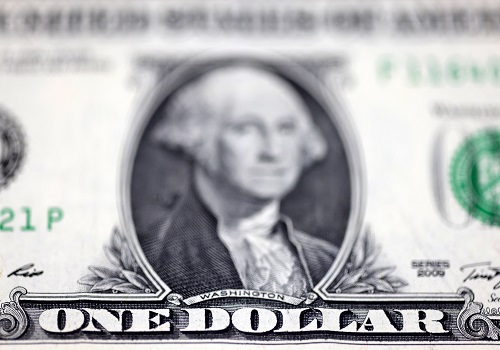
The U.S. dollar was back on the front foot on Friday and looking to end a volatile week with a slight gain, as markets weighed the impact of Donald Trump's return to the White House and what that means for the U.S. economy and its interest rate outlook.
Before the Asian day is out, China will conclude its five-day meeting of the Standing Committee of the National People's Congress, from which investors will be watching for details of stimulus measures that could lift the yuan and Antipodean currencies – often regarded as yuan proxies.
The U.S. dollar had lost ground in the previous session as traders closed out profitable bets on a Trump presidency following his election victory.
That pushed sterling further from the psychologically important $1.30 level, while the euro fell 0.17% to $1.0782.
The common currency was headed for a 0.3% decline for the week which saw a political crisis in Germany, the euro zone's biggest economy, where an awkward coalition led by Chancellor Olaf Scholz collapsed late on Wednesday.
The U.S. Federal Reserve on Thursday cut interest rates by 25 basis points as widely expected and flagged a patient, cautious approach to further easing.
"(The) meeting doesn't change the view that the Fed is still on the path to lower rates and another rate cut in December is likely unless the inflation and labour market data surprises materially to the upside," said Kerry Craig, global market strategist at J.P. Morgan Asset Management.
"For 2025, however, the picture will be complicated by potential for trade and tax policies to add to the inflation outlook."
The central bank's rate trajectory has been clouded by Trump's election victory as his plans for hefty import tariffs are widely expected to stoke inflation.
Traders have since reacted to the outcome of the election by trimming bets on rate cuts next year.
"If the incoming Trump administration does indeed levy significant tariffs or adopt other inflationary policies, then we believe the Fed funds rate may bottom out next year closer to 4% than to 3%," said Jay Bryson, chief economist at Wells Fargo.
Sterling last traded at $1.2970 after having fallen to a roughly three-month low earlier in the week.
The pound had rallied 0.8% on Thursday after the Bank of England cut interest rates but said it expected inflation and growth to pick up more quickly than it had previously forecast.
The yen was little changed at 152.86 per dollar.
Against a basket of currencies, the dollar ticked up 0.1% to 104.50, on track to gain about 0.2% for the week. It had rallied 1.53% on Wednesday as "Trump trades" picked up strongly.
FURTHER SUPPORT
Friday's main event centres around the outcome of China's NPC Standing Committee meeting with anticipation of further economic support having cushioned some of the impact from a second Trump presidency on Chinese assets over the past few days.
The president-elect has threatened to impose 60% tariffs on U.S. imports of Chinese goods.
The yuan was last a touch lower at 7.1476 per dollar in the onshore market while its offshore counterpart slipped 0.08% to 7.1558 per dollar.
The Australian dollar, often used as a liquid proxy for its Chinese counterpart, fell 0.4% to $0.6655 as traders waited for news from China.
Still, the Aussie was set for a 1.85% weekly gain, its best week in 2-1/2-months, drawing support from buoyant risk sentiment.
The New Zealand dollar eased 0.24% to $0.6008 but was similarly on track to gain 1% for the week.
"I think it's very likely that we will see significantly more fiscal and monetary stimulus from Beijing, which could offset some of the trade headwinds," said David Chao, global market strategist for Asia Pacific ex-Japan at Invesco.
"All eyes are on what may emerge from China's policy toolkit after the conclusion of the NPC Standing Committee meeting."
